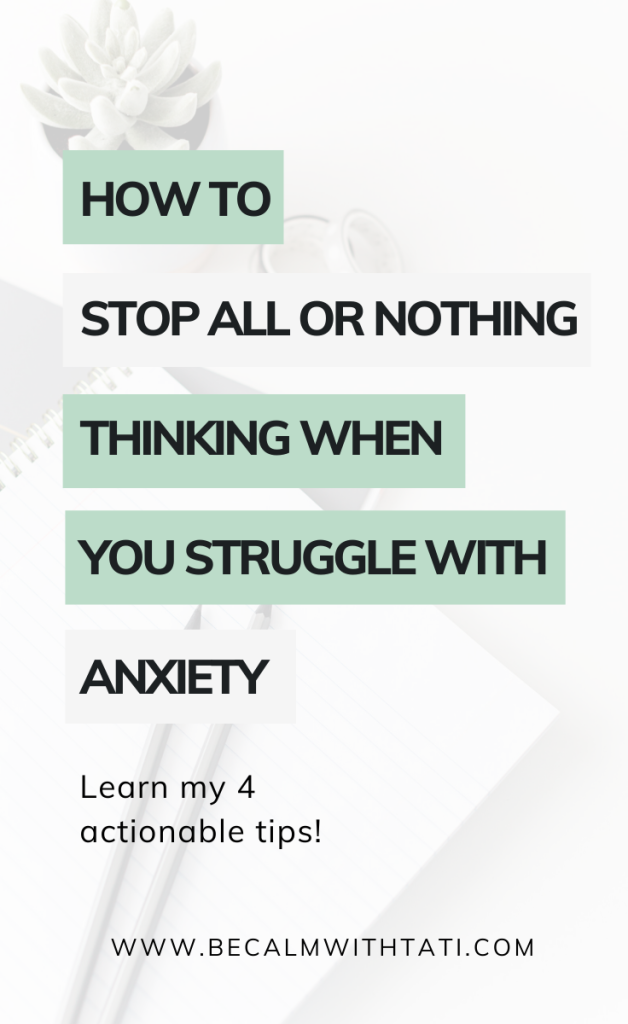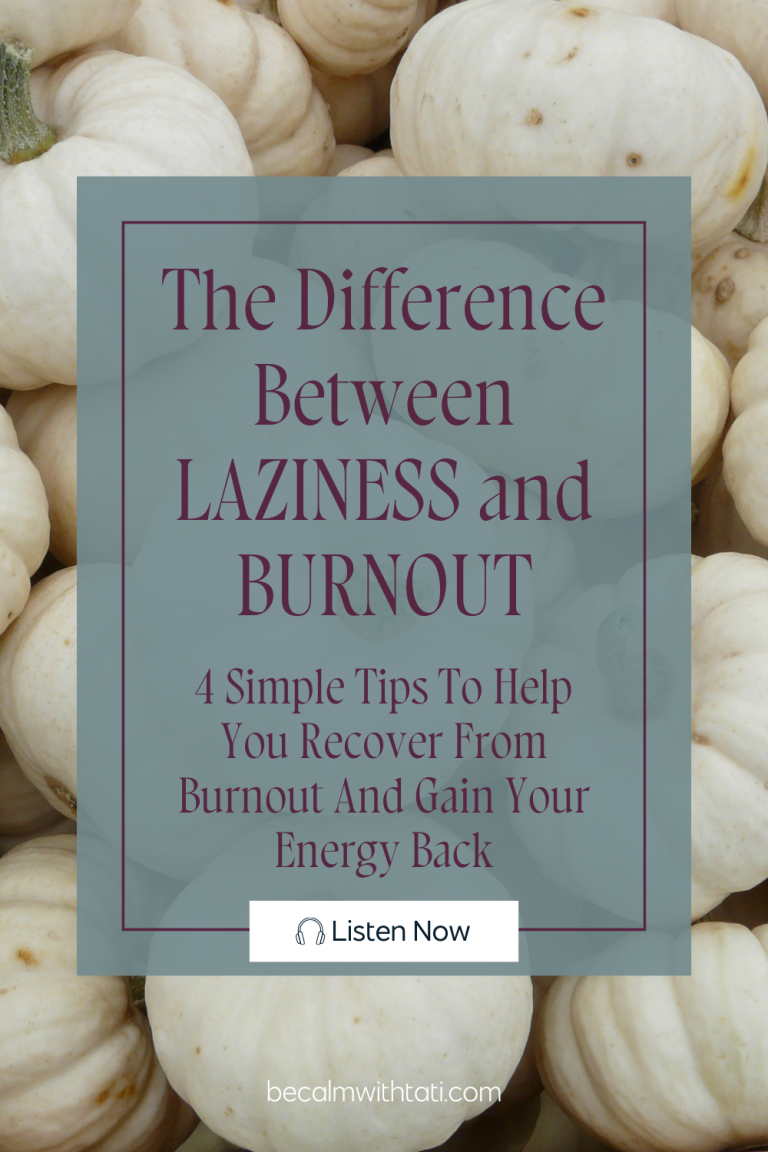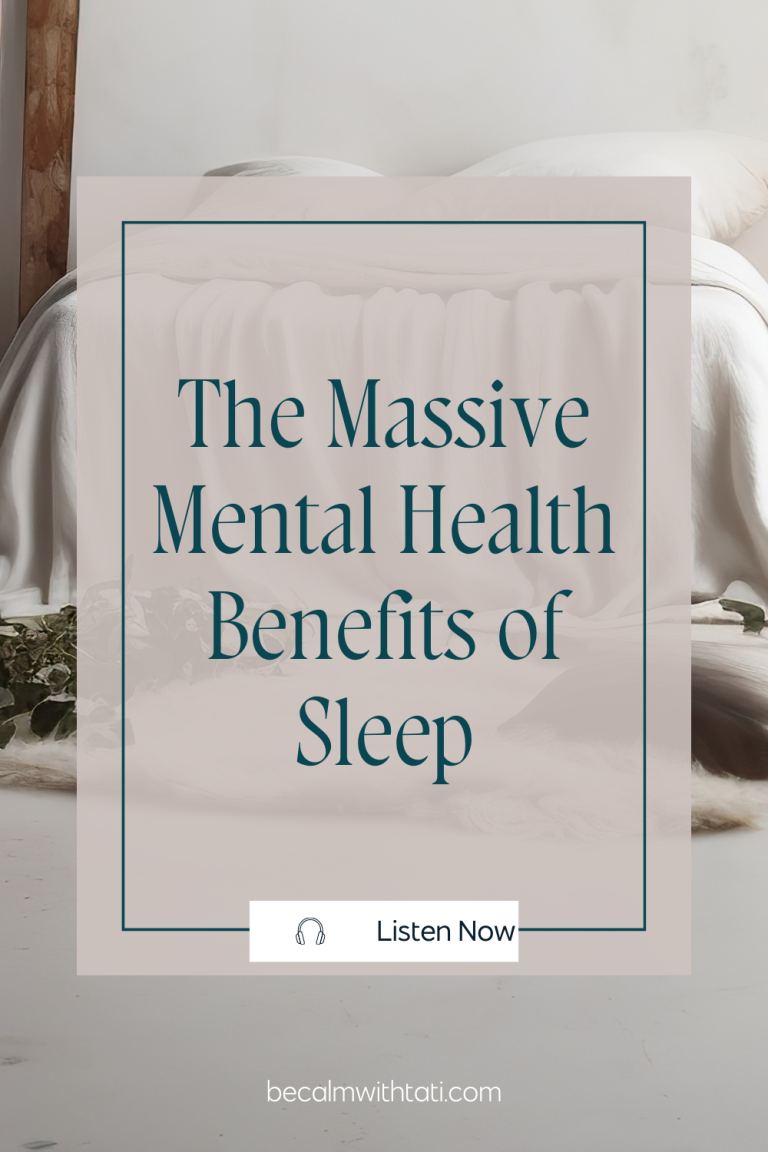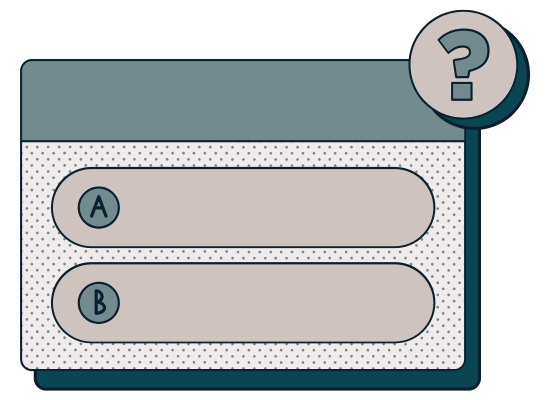Listen Now:
Are you guilty of engaging in all or nothing thinking? You either view things as being perfect or terrible. If you’re not perfect, then you’re a failure. You use terms such as “all,” “never,” “always,” or “every.” You focus on the extremes of possibility, rather than all the shades of grey in the middle.
Another term for all or nothing thinking is black and white thinking, and it is common when you struggle with high-functioning anxiety. It is an example of a cognitive distortion, which are thoughts that are inaccurate and often based on minimal evidence.
When you think in terms of all or nothing, then it can come out in your speech and have an influence on the way you feel and the things you do.
Your thoughts are the background music running in your mind and have an influence on everything you do and how you feel, which is why it’s so important to recognize how your thoughts can actually be harming you and causing you to feel worse.
All Or Nothing Thinking Is Ruining Your Life
The title for this episode, all or nothing thinking is ruining your life, is actually kind of ironic because I’m USING all or nothing thinking in the title. When I say it’s ruining your life, this is actually an exaggeration of reality, but I can bet that it influenced you to click over because of fear and curiosity.
How do you feel when you think of something ruining your life? This seems pretty intense and drastic, right? And it might make you feel hopeless and bring up feelings of dread or a sense of doom about the future. This is what happens when you engage in all or nothing thinking, these emotions of fear, uncertainty, dread, and hopelessness come up and put you in a bad mood and can result in increased anxiety.
The doom and gloom aren’t here to stay though, because I’m going to teach you how to CUT all or nothing thinking out of your life so you can start feeling more positive, optimistic, and so you can start viewing things in a realistic way.
Now here are my 4 TIPS for how to stop all or nothing thinking!
How To STOP All Or Nothing Thinking
Tip #1: Look For The Signs Of All Or Nothing Thinking
All or nothing thinking might be hidden in plain sight. You might think it’s obvious when you’re looking at yourself either as a success or a failure, but there are other types of all or nothing thinking that you may be missing.
Do you have rigid expectations for yourself? When you start a new habit or goal such as an exercise routine and meditation plan and you miss a day, do you view it as completely thrown out the window? Do you see yourself as a failure?
If there is even one sign of you doing things incorrectly or not up to your expectations, do you focus heavily on this one misstep and then lose motivation and start being hard on yourself?
Do you struggle with moderation and balance?
Dichotomous Thinking
Another example of all or nothing thinking can be known as dichotomous thinking. This is when you view two concepts as being in opposition of each other. For example, either you are busy or you are lazy. Either you are making progress or you are where you need to be, you can’t be doing both.
Sometimes dichotomous thinking can be sneaky, and you might have this underlying belief without really being aware of it. That’s why it’s so important to recognize these types of thinking when they show up.
Another example of all or nothing thinking can be making generalizations, of course, in and of itself making generalizations is not harmful. However, when you are making generalizations about your own bad behavior, mistakes, or personality, then this can have a negative impact on your mood.
For example: I can never do things right. I am always making mistakes. I always look awkward in social situations.
This can be easy to pick out just by being aware of when you use the words, always, never, ever, or every.
Be a detective when it comes to your thoughts and the language you use, because they influence you more than you might think. And don’t judge yourself for thinking in this way! There’s nothing wrong with you, and you aren’t doing anything wrong. Be kind to yourself and recognize that this was something you learned, and it is something you can unlearn.
Tip #2: Look At The Evidence: Is This Thought Accurate?
Now that you know what all or nothing thinking looks like, it’s time to look at the evidence for these thoughts. Is it really true that you always make mistakes? Or are you forgetting all of the many occasions when you’ve done things well?
If you miss a day of your workout plan, does that really mean that your efforts are wasted and you are a failure? Definitely not. Missing one day, or even more, does not make or break things, and the more you focus on the past and what you cannot change, the more you will stay stuck there.
Instead of viewing yourself as a failure, view yourself as a human who is imperfect.
Additionally, focus on judging the behavior and the specific instance, rather than yourself or others as a person. For example, instead of saying, “I am a failure,” you might say, “I failed in this one instance, this does not define me as a person, and I can learn from this and do better next time.”
When you can start learning how to put your thoughts into perspective, then it will allow you to view yourself from an objective viewpoint, as opposed to the negative bias you have probably been viewing yourself from.
Tip #3: Start Thinking In Shades Of Grey
FACT: Life is NOT black and white or all or nothing. Each and every person, characteristic, or trait is on a spectrum. Even within the realm of high-functioning anxiety, there is a spectrum of variation in what different people experience and struggle with. Similarly, you as a person are complex and cannot be defined by singular terms such as “success” or “failure” or “lazy.”
Sure, there are times when you will succeed, there are times when you will fail, and there will be times you feel lazy, but these states are all in flux and ever-changing.
See if you can practice viewing the shades of grey in between, putting things into perspective, and practicing moderation in your life, where possible. It is very rare that your actions are life-altering and as massively detrimental as you might fear they are.
Remember that you have coped with so many things before and made it through.
One of my favorite ways to start thinking differently is to challenge dichotomous thinking by using the word AND. Instead of thinking, “You’re exactly where you need to be OR you are making progress.” Try thinking, “You are exactly where you need to be AND you are making progress.”
See how that opens up possibilities in your mind?
Embrace the in between, the uncertainty, the humanity, the imperfection, and the shades of grey.
Tip #4: Remember That Your Thoughts Are Not Facts!
Just because you think something, or say something, doesn’t make it true. Sometimes it can be easy to automatically believe your thoughts and go down the rabbit hole of “what if’s” and “I can’t believe I did that,” etc.
When you get stuck in this place of negative thoughts that pile on top of each other and make you feel worse, this is called a downward spiral. Your negative thoughts, bring up difficult emotions, which just create more negative thoughts, leaving you stuck in this place of anxiety, negativity, and dread.
That’s when it can help to remember that these thoughts and feelings you’re having are NOT factual and they CAN be changed. You have more control over the way you think than you think you do.
So remember this in those moments that you get caught up in downward spirals.
There’s nothing wrong with you for thinking this way. However, there are consequences to thinking this way: it negatively impacts your mood, your mental health, and your confidence in going outside of your comfort zone towards the things that matter to you.
Practice these tips regularly so you can STOP all or nothing thinking and finally start thinking more positively and realistically. Things don’t change if you don’t put them into action- so make a list of the steps and schedule a plan for you to start them over the next week!
Leave a comment below letting me know your thoughts!















